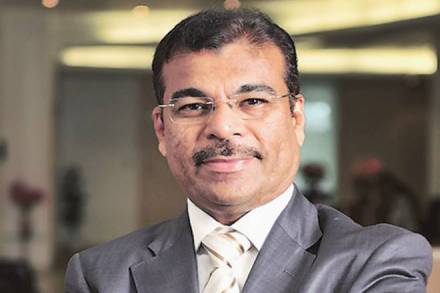By Shamik Paul and Shobhana Subramanian
Cost of funds for Shriram Transport Finance Company is likely to remain unchanged despite recent concerns that the interest rate easing cycle has bottomed out, MD & CEO Umesh Revankar told Shobhana Subramanian and Shamik Paul. He expects the company’s net interest margins to be at 7.5% in 2017-18. Excerpts:
Is there a recovery in demand for freight services?
We are seeing a post-festival demand recovery. The first trigger was due to the movement of food grains. Because of a strong agricultural output, freight movement is at a higher level. But the actual consumption-led demand, we expect it to come now. I expect the consumption to go up in December-January, encouraged by higher demand from the rural economy.
Is it viable for fleet owners to expand their fleet?
For fleet owners, the viability or profitability has not really gone up and the reason for this is that the fleet available on the road is reasonably large. At any given time, the number of trucks on Indian roads is around 1 crore. There are about 55-60 lakh heavier vehicles and about 40-50 lakh smaller trucks. Given that our gross domestic product (GDP) growth is about 7%, the growth in freight capacity should be about 10%. But as more heavy vehicles come on the road, the number of units sold may not be 10%.
Is the sluggish economy, or GST or demonetisation hurting profitability?
It is a combination of everything. The capacity utilisation at most of the industries, including heavy industries, is around 70%. So there is no fresh investment happening. Exports have also been down for nearly two years. Whatever demand we are seeing in terms of new vehicle sales, it is mostly for construction vehicles such like dumpers. The real freight movement has been sluggish. It will take some time for the capacity utilisation to go up and for fresh capacity to be added.
Do you think your loans will get costlier?
I don’t think so. The shipment of shale gas to India has already happened. That means there is an alternative available. Our cost of fund has not gone up and nobody has indicated to us that the cost of fund will go up. I feel the concern around interest rate going up is temporary and interest rates are likely to remain at this level for another one or two years.
What is your outlook on your company’s margins?
Margins should remain stable. We will get further benefit from the borrowing cost – maybe another 10-15 basis points. We still have some old high-cost borrowing, which will be phased out. We are likely to pass on this benefit to our customer. So, the margins will remain at 7.5%.
Your gross non-performing assets (NPA) are around 8.06%. Is it likely to come down in the coming quarters?
Our NPA is not a big challenge. When we finance people who are dependent on the earning from the vehicle, we have to make room for emergencies. A delay in instalment does not mean stoppage of payment. In the retail segment, especially when you are self-employed, it is more of a delay of payment. Not a permanent default. We are not disturbed because of the NPAs. Payments are still coming.
Will we see a change in your funding mix?
Right now the fund flowing into mutual funds is higher. Therefore, raising money through the institutional funding has been higher for us. It all depends on which is more beneficial. Institutional route has been beneficial because more money is available. So bank borrowing has come down as a proportion of total funding. Once banks reduce their rates, then we may borrow more from the banks.
